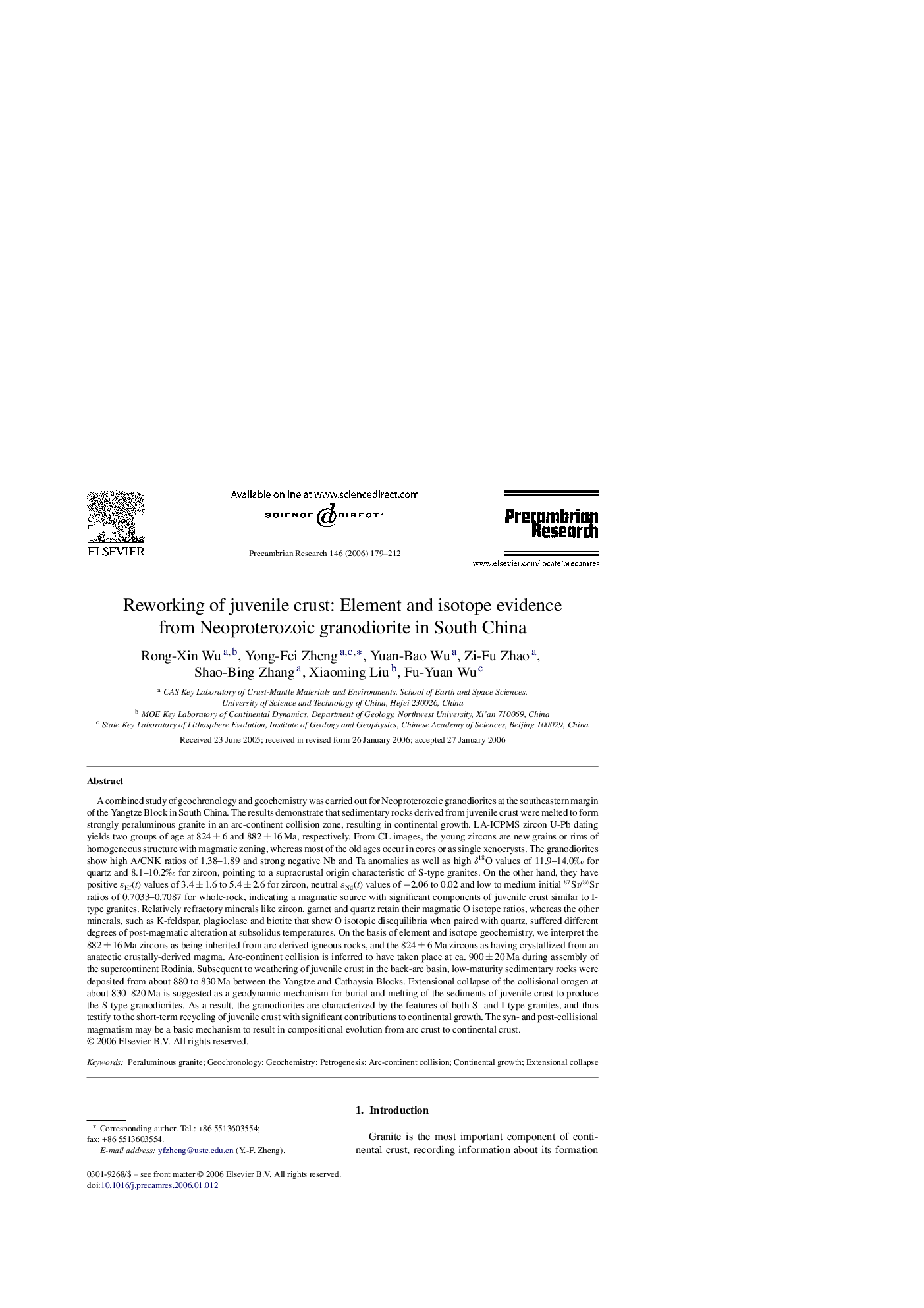| کد مقاله | کد نشریه | سال انتشار | مقاله انگلیسی | نسخه تمام متن |
|---|---|---|---|---|
| 4724696 | 1639736 | 2006 | 34 صفحه PDF | دانلود رایگان |

A combined study of geochronology and geochemistry was carried out for Neoproterozoic granodiorites at the southeastern margin of the Yangtze Block in South China. The results demonstrate that sedimentary rocks derived from juvenile crust were melted to form strongly peraluminous granite in an arc-continent collision zone, resulting in continental growth. LA-ICPMS zircon U-Pb dating yields two groups of age at 824 ± 6 and 882 ± 16 Ma, respectively. From CL images, the young zircons are new grains or rims of homogeneous structure with magmatic zoning, whereas most of the old ages occur in cores or as single xenocrysts. The granodiorites show high A/CNK ratios of 1.38–1.89 and strong negative Nb and Ta anomalies as well as high δ18O values of 11.9–14.0‰ for quartz and 8.1–10.2‰ for zircon, pointing to a supracrustal origin characteristic of S-type granites. On the other hand, they have positive ɛHf(t) values of 3.4 ± 1.6 to 5.4 ± 2.6 for zircon, neutral ɛNd(t) values of −2.06 to 0.02 and low to medium initial 87Sr/86Sr ratios of 0.7033–0.7087 for whole-rock, indicating a magmatic source with significant components of juvenile crust similar to I-type granites. Relatively refractory minerals like zircon, garnet and quartz retain their magmatic O isotope ratios, whereas the other minerals, such as K-feldspar, plagioclase and biotite that show O isotopic disequilibria when paired with quartz, suffered different degrees of post-magmatic alteration at subsolidus temperatures. On the basis of element and isotope geochemistry, we interpret the 882 ± 16 Ma zircons as being inherited from arc-derived igneous rocks, and the 824 ± 6 Ma zircons as having crystallized from an anatectic crustally-derived magma. Arc-continent collision is inferred to have taken place at ca. 900 ± 20 Ma during assembly of the supercontinent Rodinia. Subsequent to weathering of juvenile crust in the back-arc basin, low-maturity sedimentary rocks were deposited from about 880 to 830 Ma between the Yangtze and Cathaysia Blocks. Extensional collapse of the collisional orogen at about 830–820 Ma is suggested as a geodynamic mechanism for burial and melting of the sediments of juvenile crust to produce the S-type granodiorites. As a result, the granodiorites are characterized by the features of both S- and I-type granites, and thus testify to the short-term recycling of juvenile crust with significant contributions to continental growth. The syn- and post-collisional magmatism may be a basic mechanism to result in compositional evolution from arc crust to continental crust.
Journal: Precambrian Research - Volume 146, Issues 3–4, 10 May 2006, Pages 179–212